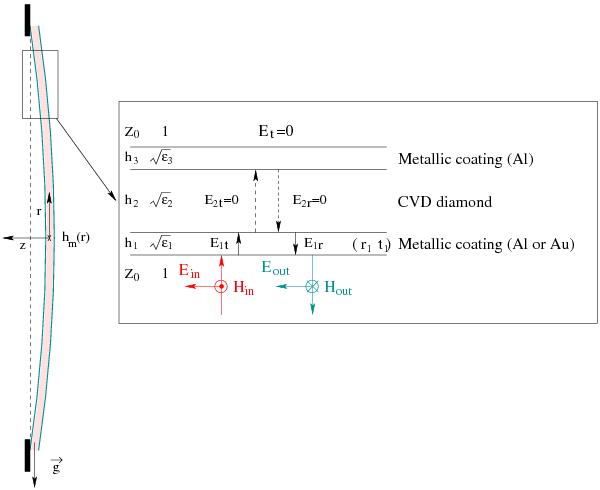Fig. 2

Composition of the thin membrane and how the light from the laser interacts in its
interior. The membrane consists of three films: (a) an aluminum coating of width
h1, (b) a CVD-diamond substrate of width
h2, and (c) an aluminum or gold coating, of width
h3. Left: the shape of the
clamped-edge membrane, hm(r), is only
depending on r, and in the classical adaptive optics
implementations, the gravity vector is vertical. Right: a linearly
polarized plane wave (Ein,
Hin) is normally incident on the surface of a medium
of complex dielectric constant ϵ1.
E1t, E1r are the electric
fields inside the first reflective medium for, the transmitted and reflected waves
respectively. For a good reflection of light with aluminum or gold, the thickness of
the coating must be greater than 50 nm and the two electric fields inside with
medium will be strongly attenuated. In this case, E2t,
E2r,Et
inside and outside the CVD-diamond will be equal to zero.
 is the free-space impedance and the H-field amplitude will be
always
is the free-space impedance and the H-field amplitude will be
always  depending on the
relative permittivity ϵ of the medium.
depending on the
relative permittivity ϵ of the medium.
Current usage metrics show cumulative count of Article Views (full-text article views including HTML views, PDF and ePub downloads, according to the available data) and Abstracts Views on Vision4Press platform.
Data correspond to usage on the plateform after 2015. The current usage metrics is available 48-96 hours after online publication and is updated daily on week days.
Initial download of the metrics may take a while.


